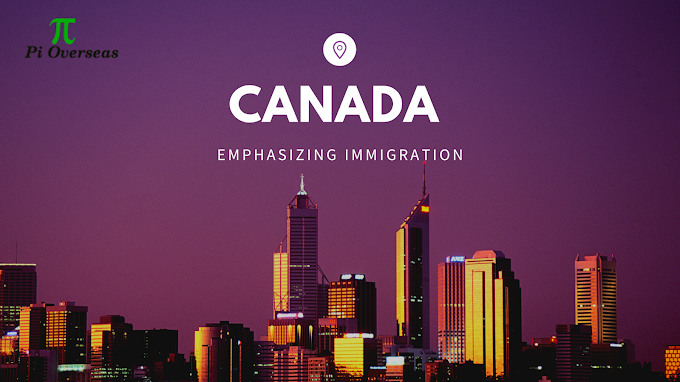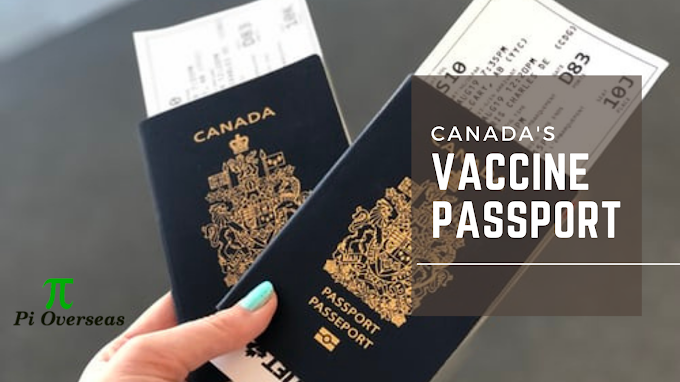Advantages and disadvantages of applying for immigration from the province vs the federal government.
The cost of applying for Canadian immigration can be a deciding factor in your economic immigration pathway.
In Canada, you always process your application to the Immigration, Refugees, and Citizenship Canada (IRCC) for permanent residency, as federal law deals with final immigration status. However, you can also apply for a province to get your permanent residence permit as well. If you apply properly with the provincial route, you will receive a provincial certificate, or Quebec Selection Certificate from Quebec, to support your permanent application to the IRCC.
While this option will open you up to many immigration options, it can be more expensive and time-consuming. On the other hand, provincial programs can open the door to even more immigration applicants. They are well-designed to pave the way for permanent residency for workers whose skills meet the needs of the local labor market.
In this article, we will compare the cost of immigration programs for different classes. At the same time, consider the pros and cons of immigration via Express Entry vs provincial immigration.
Fee for skilled workers to apply to IRCC-Based programs
When you apply for immigration at the IRCC, you usually pay for yourself, as well as on the dependent coming to Canada as your spouse or partner, and your children. You must pay for the rights of a permanent residence for yourself and your spouse. Children who are dependent can be removed from the fee.
Prices for Canadian immigration are rising this year for the application of several economic, family, and humanitarian classes. In 2020, the IRCC increased the PR fees in order to pay for inflation for the first time since the time of 2002. At that time, the IRCC announced that it would increase its fee by two years to adjust for inflation, which means this year will pay now. The next expansion is expected to take place in 2024.
Beginning April 30, the cost for these immigration programs will go up by about $ 40 more than the current price of $ 1,325. Principals and couples to attend will pay $ 1,365 (all CAD funds) plus each biometrics fee to include:
Express Entry-managed programs
Provincial Nominee Program (PNP)
Quebec Skilled Worker
Atlantic Immigration Program
Rural and Northern Immigration Pilot
Agri-food Immigration Pilot
The cost of biometrics costs around $ 85 per person or $ 175 for a family of two or more. To give an example of some of the possible full costs, one principal applicant applying for an Express-managed program can pay $ 1,450 including biometrics fees. A family of two can pay $ 2,905 for one program. If they had one child, the fee could cost up to $ 3,135. Each dependent will cost $ 230.
The application fees vary depending on the immigration program, but the right of permanent residence investment is often the same.
Costs for PNPs & Quebec immigration
In addition to the fees required to apply for immigration to the federal government, PNPs and expatriates in Quebec usually pay the application fees in their respective regions. For example, one person who wants to move to Ontario will pay $ 2,925 via PNP, but about $ 1,450 via Express Express.
There are currently four unpaid PNPs to apply for regional elections: Newfoundland and Labrador, Nova Scotia, Northwest Territories, and Yukon. Newfoundland and Labrador recently withdrew their funding in an effort to encourage newcomers to apply for immigration to the region. Skilled workers applying in other areas can expect to pay between $ 250 and $ 1,500.
Base vs Enhanced PNPs
The difference between the base and the enhanced PNP depends on whether the applicants have an Express Entry profile. Provincial governments oversee base PNP. Enhanced PNP is open to those who are currently having an Express Entry profile.
Applicants who are eligible for Enhanced PNP qualify for Express Entry managed programs such as the Federal Skilled Worker Program (FSWP), the Canadian Experience Class (CEC), or the Federal Skilled Trades Program (FSTP).
The advantage of being at the Express Entrance pool is the opportunity to apply directly to the IRCC for immigration. Since the IRCC has the final say about who will live permanently, applying for an Express entry is easier than applying for a PNP. Whereas when applying for a PNP, you must first apply for a provincial nomination and then apply for a permanent residency.
Express Entry is a process based on the points system that the federal government uses to invite immigrants to apply for permanent residency. Applicants with the highest number of invitations (ITA) are awarded invitations two times a week. Since the COVID-19 pandemic, the IRCC has often called candidates who are eligible for CEC or PNP program only rather than the normal Express Entry draw. The IRCC has invited PNP attendees only since September 2021 and has not had any drawings for FSWP applicants since December 2020.
In the past, an Express Entry applicant may reject an invitation to apply for a provincial nomination, and wait until you receive an Express Entry ITA so they need to pay for one application. However, since the break in the FSWP and CEC chart has affected Canada's immigration plan globally, the option of applying for an updated PNP has become a lucrative one.
Express Entry applicants receive 600 additional Comprehensive Ranking System (CRS) scores for a provincial nomination. This score guarantees that they will receive an ITA and are able to apply for permanent residency.
Those who are not eligible for the Express Entry managed program can apply for base PNP programs. The provinces themselves are hosting these immigration programs. They often take time to process.
Comparing processing times
According to the processing times updates on April 19, it is taking IRCC 28 months to process base PNPs and 22 months to process Express Entry PNPs. The estimated processing time for Quebec Skilled Workers Program is now 31 months.
Before the pandemic, the standard processing time to apply for PR visa through Express Entry program directly is approximately 6 months, although this Coronavirus pandemic has drastically slowed down the processing times of all the immigration process. As per the current statistics, IRCC is taking 27 months to process FSWP applications and eight months to process CEC applications. FSTP applicants are looking at a waiting time of almost 37 months.
Based on the April 19 processing schedule, it takes the IRCC 28 months to process PNP programs and 22 months to process PNP Express Entry programs. The deadline for Quebec skilled workers is 31 months now.
The standard procedure for applying for Express Entry is six months, although serious pandemic situations have gradually increased the processing times. It now takes IRCC 27 months to process an FSWP application and eight months to process a CEC application. FSTP applicants have a 37-month waiting period.
Conclusion
Should you apply immediately to a federal or provincial program? Ultimately your decision should be based on the stream you are best suited to and the ones you think to offer the best chance of getting a permanent residency. If you are eligible for Express Entry, it is worth uploading a profile since, in addition to waiting for you for an ITA by the IRCC, the provinces that looking for skilled immigrants will also consider you.
This year, Canada is looking to admit 83,500 PNP applicants, according to the 2022-2024 immigration plan. The number is expected to increase to 93,000 by 2024. The IRCC expects 55,900 arrivals to come through Express Entry this year, but by 2024 the number of Express Entry arrivals will be increased to 111,500.








.png)





0 Comments